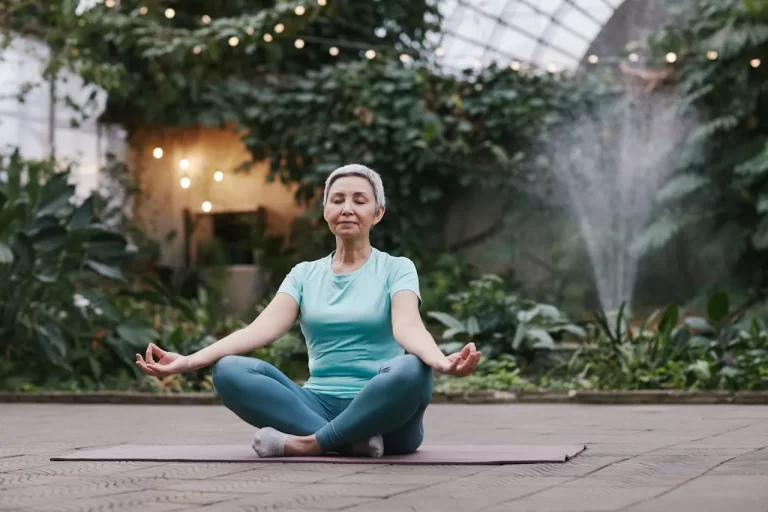Key Points
- High blood pressure affects nearly half of U.S. adults and is a major risk factor for heart problems and stroke.
- Scientific studies show mindfulness meditation may help reduce systolic and diastolic blood pressure by calming the nervous system and lowering stress.
- Mindfulness is best used as a complement—not a replacement—for standard therapies like medications, diet, and exercise.
- Techniques such as breath-focused meditation, body scans, and Mindfulness-Based Stress Reduction (MBSR) are commonly used in studies.
- Measurable changes can appear in as little as 4–8 weeks with regular practice.
A New Approach That Starts with Stillness
Despite advances in therapy and lifestyle awareness, high blood pressure remains difficult to control for millions of adults. Even those who take medications, improve their diet, and stay physically active may still struggle to bring their numbers down. That’s led researchers and health professionals to explore a different kind of intervention—one that doesn’t involve pills, devices, or intense workouts.
Just stillness. Just awareness. Just breath.
This simple approach—known as mindfulness meditation—is gaining traction as a complementary strategy for lowering blood pressure. Backed by emerging studies and physiological insight, it offers a non-invasive, low-risk way to engage the body’s natural ability to self-regulate.
The High Stakes of Uncontrolled Blood Pressure
High blood pressure, or hypertension, affects nearly 1 in 2 adults in the United States and contributes to major health risks including heart attack, stroke, and kidney damage, according to the Centers for Disease Control and Prevention (CDC, 2023). Yet only about 24% of people with hypertension have it under control.
While medications are effective for many, the growing interest in natural or complementary strategies is prompting scientists to explore behavioral interventions—especially those that target chronic stress, a key driver of elevated blood pressure that medications don’t always address directly.
The Science Behind Mindfulness and Cardiovascular Health
Mindfulness meditation involves paying attention—on purpose, in the present moment, without judgment. But this simple act has measurable effects on the body’s physiology, particularly the cardiovascular system.
A 2022 meta-analysis in JAMA Internal Medicine reviewed multiple randomized controlled trials and found that mindfulness-based interventions were associated with statistically significant reductions in both systolic and diastolic blood pressure, particularly in adults with stage 1 hypertension (Shi et al., 2022).
Another randomized trial published in Psychosomatic Medicine reported that participants who completed an 8-week MBSR program experienced a 5.5 mmHg drop in systolic blood pressure compared to a control group (Hughes et al., 2013).
Key Mechanisms at Work:
- Reduced Cortisol and Inflammation: Chronic stress increases cortisol, which in turn raises blood pressure and inflammation. Regular mindfulness practice lowers cortisol levels and inflammatory markers like C-reactive protein (Pascoe et al., 2017).
- Nervous System Modulation: Mindfulness downregulates the sympathetic “fight-or-flight” response while activating the parasympathetic “rest-and-digest” system, promoting vasodilation and a lower resting heart rate (Tang et al., 2009).
- Improved Heart Rate Variability: Higher HRV is a sign of cardiovascular resilience. Mindfulness has been shown to enhance HRV, particularly in users with high stress (Krygier et al., 2013).
Where Mindfulness Fits into Modern Hypertension Care
It’s important to note that mindfulness is not intended to replace antihypertensive medications or other medical therapies. However, leading organizations such as the American Heart Association now recognize meditation as a “reasonable complementary strategy” for individuals seeking additional ways to manage blood pressure—particularly when stress is a known factor (Brook et al., 2013).
In practice, mindfulness is most effective when combined with other lifestyle changes, such as dietary adjustments, physical activity, and sleep optimization.
Proven Techniques Used in Mindfulness Studies
The most widely studied mindfulness approaches include:
- Mindfulness-Based Stress Reduction (MBSR): A structured 8-week program developed by Jon Kabat-Zinn, incorporating breath meditation, body scans, and mindful movement.
- Breath Awareness: Observing the breath without trying to change it.
- Body Scan: A slow mental sweep through the body to promote awareness and release physical tension.
- Loving-Kindness Meditation: Focusing on compassion and positive emotions toward oneself and others.
Clinical studies typically recommend practicing 20 to 45 minutes daily, five or more days per week. Meaningful reductions in blood pressure are often observed after 4 to 8 weeks of consistent practice.
Populations Most Likely to See Results
Mindfulness may benefit a wide range of users, but some groups seem to respond particularly well:
- Adults with Stage 1 Hypertension: Especially those not yet taking medication.
- People Under Chronic Stress: Caregivers, high-pressure workers, or those managing trauma.
- Individuals with Coexisting Chronic Symptoms: Such as blood sugar regulation problems or joint pain.
These individuals may not only experience reductions in blood pressure but also see improvements in emotional regulation, sleep quality, and daily function.
Mindfulness in the Workplace: Measurable Benefits
In one corporate wellness program at a U.S. tech company, employees with elevated blood pressure took part in a six-week mindfulness pilot. The program included weekly guided sessions and access to breathing and stress-reduction tools. By the end, participants saw an average systolic drop of 6 mmHg, alongside improvements in sleep and focus.
This echoes broader research suggesting that even modest workplace mindfulness efforts can yield cardiovascular benefits, particularly in high-stress environments where traditional self-care can fall short.
Steps to Begin a Mindfulness Practice at Home
Starting a mindfulness routine doesn’t require advanced training. Here are a few simple ways to begin:
- Choose a Consistent Time: Start with 10 minutes in the morning or before bed.
- Use Guided Resources: Apps like UCLA Mindful, Insight Timer, or Headspace offer free programs.
- Track Your Progress: Keep a journal of practice and any changes in stress or blood pressure.
- Stay Patient: Benefits often emerge gradually—consistency is key.
Always consult a health professional before modifying any hypertension therapy, especially if you are on blood pressure medications.
A Practical Tool for Heart Health
Mindfulness meditation isn’t a miracle fix—but it’s a promising, science-backed tool that may support long-term cardiovascular health. By targeting stress, supporting nervous system balance, and enhancing emotional resilience, it offers a safe and empowering way to complement more conventional strategies.
In a healthcare landscape dominated by pills and procedures, a moment of stillness might offer something rare: sustainable calm—and perhaps, a stronger heart.
The article does not in any way constitute as medical advice. Please seek consultation with a licensed medical professional before starting any treatment. This website may receive commissions from the links or products mentioned in this article.
Subscribe for Free for more insightful health articles tailored to your needs.
Sources
- Centers for Disease Control and Prevention (CDC). (2023). Facts About Hypertension
- Shi, L. et al. (2022). “Effectiveness of Mindfulness-Based Interventions on Blood Pressure.” JAMA Internal Medicine. Link
- Hughes, J. W. et al. (2013). “Mindfulness-Based Stress Reduction for Prehypertension.” Psychosomatic Medicine, 75(8), 721–728. Link
- Tang, Y. Y., Ma, Y., Fan, Y. et al. (2009). “Central and autonomic nervous system interaction is altered by short-term meditation.” PNAS. Link
- Krygier, J. R. et al. (2013). “Mindfulness meditation, well-being, and heart rate variability.” International Journal of Psychophysiology. Link
- Pascoe, M. C. et al. (2017). “The impact of mindfulness on cortisol and inflammation.” Psychoneuroendocrinology, 86, 152–168. Link
- Brook, R. D. et al. (2013). “Beyond Medications and Diet: Alternative Approaches to Lowering Blood Pressure.” Hypertension. Link
Last Updated on July 31, 2025




Mindfulness for blood pressure? Sounds relaxing and helpful!
Sustainable eating makes me feel like part of the solution.
Meditation at home = simple trick for stress and blood pressure
Mindfulness sounds like a gentle way to care for health